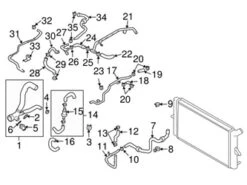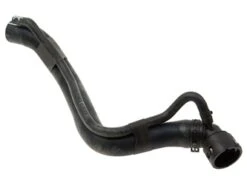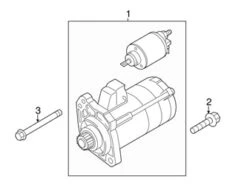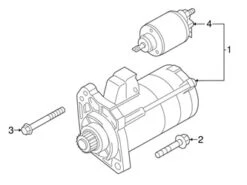Genuine VW/Audi 06K905601D Spark Plug – Audi, VW
$13.39 Original price was: $13.39.$9.37Current price is: $9.37.
- Quality Meets Affordability
- Online customer care, always here for you.
- Control the delivery date and try to deliver it in the fastest time
- Secure Payments, Secure Shopping

Spark plugs provide the spark needed to ignite the air/fuel mixture in each cylinder for engine combustion. High voltage from the ignition coil is transferred through the spark plug to an air gap between the spark plug tip and the spark plug ground to the engine. Once the voltage reaches the air gap, the voltage jumps the gap in the form of a spark, igniting a compressed air fuel charge inside the cylinder. The air fuel charge explodes, creating the force needed to push the cylinder down and turning the engine crankshaft to propel the engine. In short, spark plugs serve a vital function in keeping your vehicle running properly.
Components of a Spark Plug
- A metal terminal that connects to the ignition system
- A center electrode for current to flow through the spark plug with a tip for the current to jump making the spark
- A ribbed ceramic insulator to keep current flowing through the spark plug center electrode and not into other parts of the engine
- A threaded metal case to anchor the spark plug into the cylinder head with a ground electrode for the spark to jump to
- A seal to seal the spark plug case to the cylinder head to prevent cylinder compression from escaping
Types of Spark Plugs
The biggest differences in spark plug construction are the materials used for the electrodes, their conductivity, and their wearability.
- Copper is the base material for the center electrode on most spark plugs as it provides superb conductivity. These tend to wear quickly from the electrical transfer created by the spark and fully copper spark plugs need to be replaced every 15,000 miles.
- Copper core spark plugs with yttrium or nickel tipped electrodes and grounds take longer to wear and can last up to 30,000 miles.
- Platinum tipped copper core electrodes wear even less, provide superior conductivity, and can last up to 60,000 miles.
- Iridium tipped copper core spark plugs wear the least and can last over 100,000 miles.
When a spark plug fails prematurely it will provide a weak spark or no spark at all. Causes of premature spark plug failure can include oil leaking from the valve cover into the spark plug chamber, your engine running too lean and overheating the spark plug, and your engine running too rich and fuel fouling the plug.
Most engines are designed to run on only one type of spark plug based on its use. Be sure to check your owner’s manual for the right type of spark plug needed for your vehicle.
Genuine VW/Audi Spark Plugs.
“Left/Right or Front/Rear” notes means the part fits the left or right side of the car. These parts are still sold individually and you’ll
need to select the appropriate quantity if you plan to replace more than one of this item.












Reviews
There are no reviews yet.